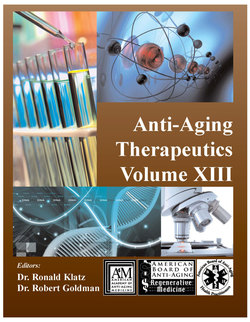Читать книгу Anti-Aging Therapeutics Volume XIII - A4M American Academy - Страница 43
На сайте Литреса книга снята с продажи.
Resveratrol Chemistry
ОглавлениеResveratrol was first described in 19781 as an isolate from rhizomes of Rheum rhaponicum, a type of rhubarb. The best known source is red wine, which derives it from the skins of the grapes, where it serves to protect the fruit as it ripens from environmental pathogens and oxidative damage from ultraviolet light. Compounds present in the skin of wine grapes give what oenophiles call “structure” so vineyard management employs various techniques to encourage formation of these compounds by intentionally stressing the vines. Cultivars of wine grapes have been selected over the centuries to predispose to formation of these compounds, unlike table or juice grapes where they impart an undesirable astringent or bitter flavor. Furthermore, because red wine is made by fermenting the whole crushed grape (a process called maceration), the compounds are extracted more thoroughly than in white wine or pressed juice. As the alcohol develops it serves as a solvent for further extraction. Aging in oak may add additional phenolic compounds. For all of these reasons wine is a much more concentrated source of resveratrol as compared to table grapes or grape juice. Resveratrol is also made by other plants including the non-edible parts of the peanut plant and the Japanese giant knotweed, the latter is inedible but serves as a commercial source of resveratrol.
Resveratrol is a polyphenol, as are many other compounds in grape skins. Broadly, these are categorized into flavonoids including anthocyanins (which give the wine its color), tannins (many similar to those found in tea), other flavonoids such as quercetin, and non-flavonoids. This latter class includes stilbenes, such as resveratrol and benzoic, caffeic, and cinnamic acids. Some compounds derive from the seeds of the grape, including oligomeric proanthocyanidins, the tetramers and pentamers believed to be most important. Although resveratrol may be the most thoroughly investigated molecule, others have revealed significant properties and some lines of evidence point to a synergistic relationship between wine compounds.
Resveratrol exists in two isomers, trans-resveratrol being the biologically active form. Exposure to light may cause the trans form to convert to the cis form, so storage conditions are important. Several related molecules in the stilbene family have been identified, many of which have biologic activity, especially tetrameric oligomers, which have been reported to be matrix metalloproteinase(MMP) inhibitors.2 As MMP’s activity contributes to collagen breakdown, this points to potential applications in anti-aging skin treatments and cancer therapy, though this remains to be explored further. In addition to the naturally occurring stilbenes, numerous synthetic derivatives have been developed, many of which have greatly increased potency for specific applications.
Figure 2. Isoforms of resveratrol
